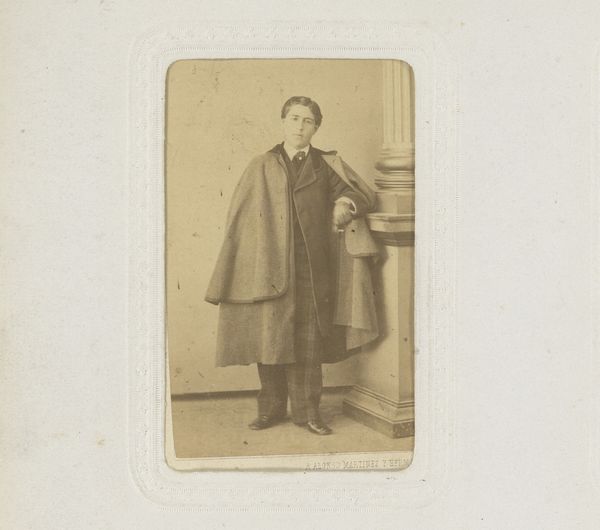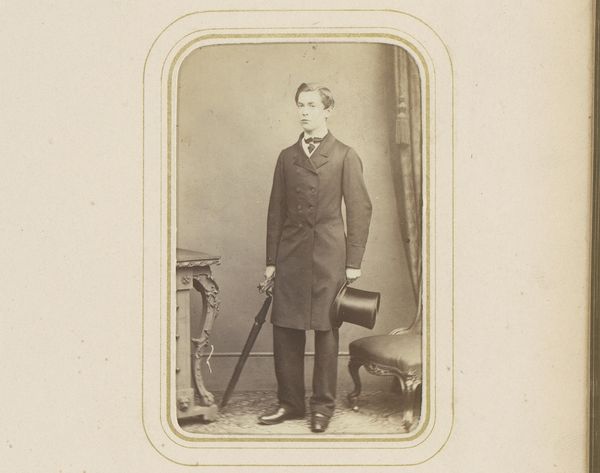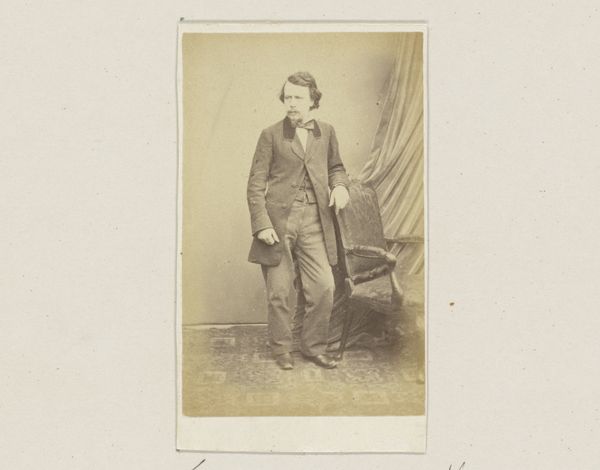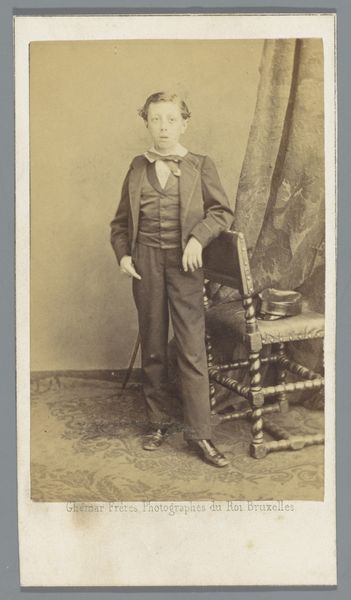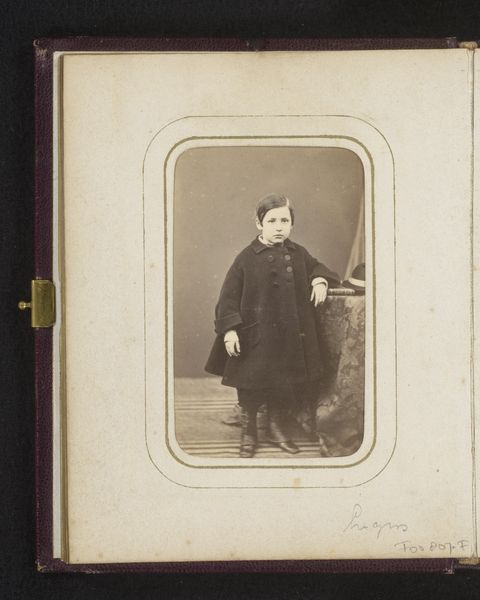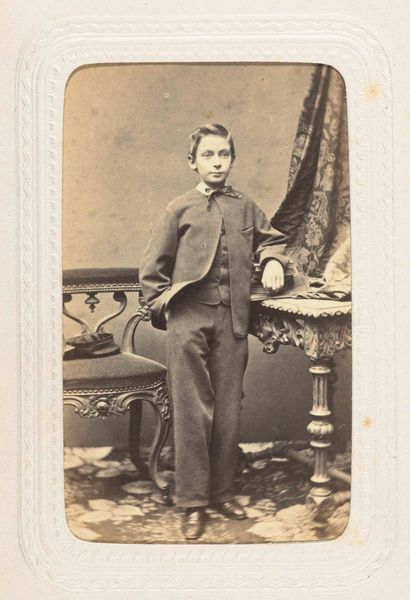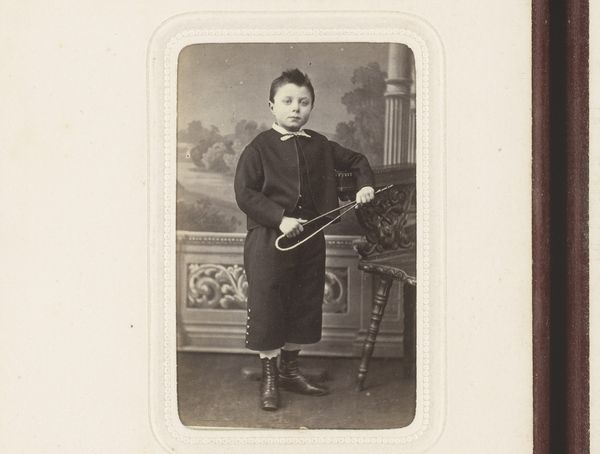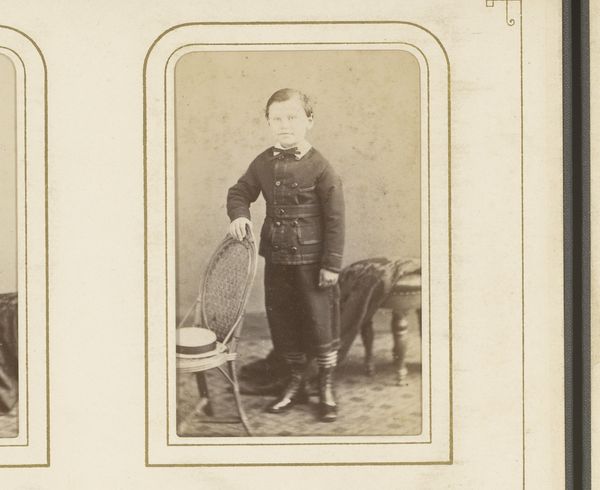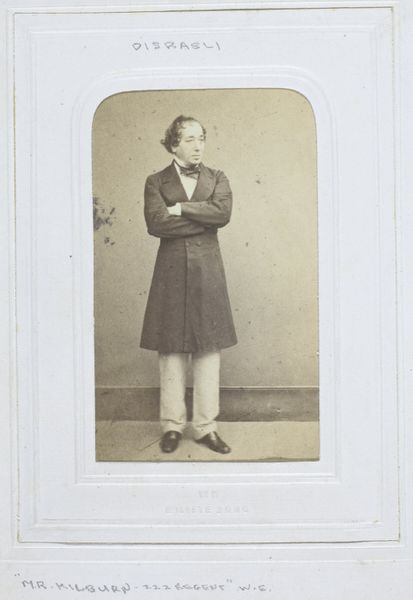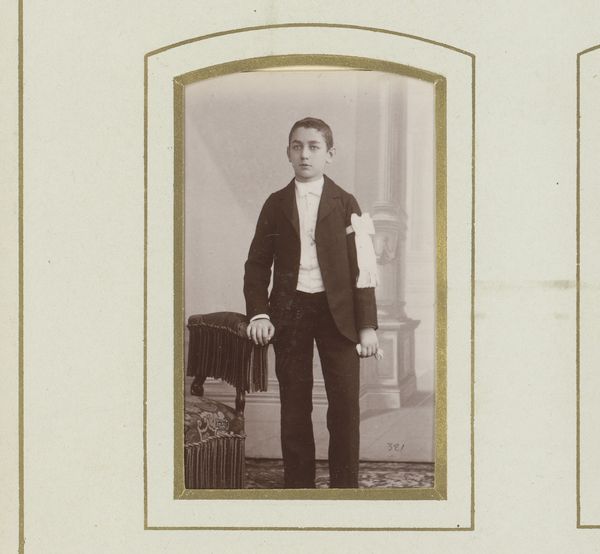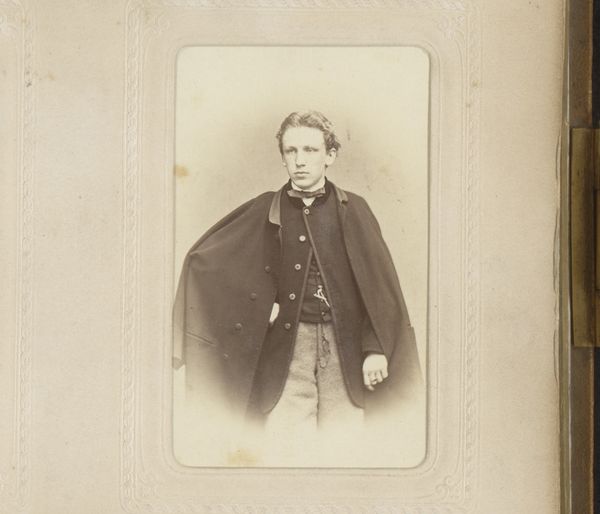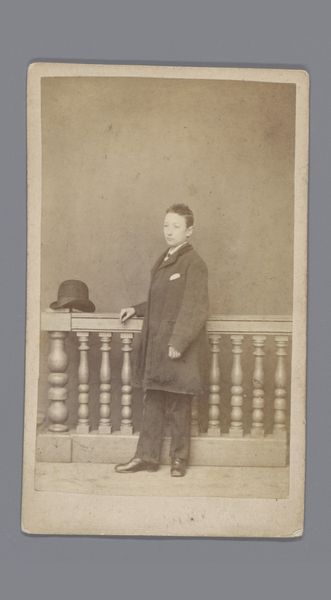
photography
#
portrait
#
photography
#
19th century
#
genre-painting
#
realism
Dimensions: height 82 mm, width 52 mm
Copyright: Rijks Museum: Open Domain
Curator: The artwork before us is a photograph entitled “Portret van een man met wandelstok, staand bij een stoel,” or “Portrait of a Man with a Walking Stick, Standing by a Chair.” It was created by Louis Désiré Dupont sometime between 1864 and 1886. Editor: My immediate impression is of formal restraint, a poised control expressed by this bourgeois subject through posture, apparel, and the symbolic attributes of walking stick and the suggestion of domestic comfort provided by the chair. It exudes the conservative values of a new European upper middle class. Curator: Precisely. Dupont captures more than just a likeness; he’s documenting a particular aspiration. The man’s erect posture and the walking stick aren’t merely physical supports; they signify status and authority, rooted in traditions of European nobility now cautiously adopted into this era’s ideals of male bourgeois identity. Editor: Absolutely. Let’s consider the materials. The photograph itself is likely an albumen print, popular during this period for its fine detail. The labor involved in both taking the photograph and preparing the print speaks to the growing accessibility of photography, even while remaining somewhat exclusive due to cost. The ornate studio chair, the expensive cut and tailored quality of the man’s coat… it all underscores consumption as a marker of emerging upper middle class respectability. Curator: And consider the composition. The tight framing directs our gaze entirely to him, isolating him—and the ideals he signifies—from a wider context. He embodies a desire for permanence, frozen in a specific moment of self-presentation. Is it sincere, or just performance? The era certainly craved such constructed imagery. Editor: Yes, the performative aspect of this cannot be overstated. But even this sense of aspirational presentation would have been very labor intensive both to set up the space, develop the print, and pose for the image, reflecting how deeply bound consumption was within the Victorian social order. Curator: He's positioned against nothing, yet he stands "for" so much about 19th-century European class. He stands in place of everything—and then remains as this artifact. It does say much about cultural and historical self-image, preserved through visual symbols of that time. Editor: Agreed, Dupont’s photograph reveals not just an individual but an economic and social landscape rapidly reshaping through the act of commodity, an expression that remains materially embedded in every fiber of its own manufacture. Curator: Indeed. The symbolic value intertwines so intricately with the social production, as you aptly highlighted. Editor: A valuable discussion.
Comments
No comments
Be the first to comment and join the conversation on the ultimate creative platform.
